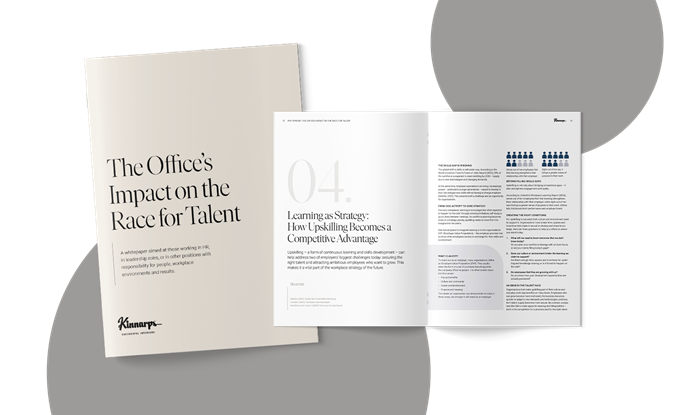Learning as Strategy: How Upskilling Becomes a Competitive Advantage
The skills gap is widening
The global shift in skills is well under way. According to the World Economic Forum’s Future of Jobs Report (2025), 59% of the workforce is expected to need reskilling by 2030 – largely due to new technologies and changing demands.
At the same time, employee expectations are rising. Increasingly, people – particularly younger generations – expect to develop in their role and gain new skills without having to change employer (Deloitte, 2025). This presents both a challenge and an opportunity for organisations.
From side activity to core strategy
In many workplaces, learning is encouraged, but often expected to happen “on the side”: through individual initiatives, self-study or quick chats between meetings. As workforce planning becomes more of a strategic priority, upskilling needs to move from the margins into the centre.
One natural place to integrate learning is in the organisation’s EVP (Employee Value Proposition) – the employer promise that outlines what employees receive in exchange for their skills and commitment.
What is an EVP?
To stand out as an employer, many organisations define an Employee Value Proposition (EVP). This usually takes the form of a set of promises describing what the company offers its people. It is often broken down into four areas:
Pay and benefits
Culture and community
Career and development
Purpose and meaning
The clearer an organisation can demonstrate its value in these areas, the stronger it will stand as an employer.

Beyond filling skills gaps
Upskilling is not only about bridging competence gaps – it also strengthens engagement and loyalty.
According to LinkedIn’s Workplace Learning Report (2024), seven out of ten employees feel that learning strengthens their relationship with their employer, while eight out of ten say it brings a greater sense of purpose to their work. Ultimately, this boosts both performance and employer brand.
Creating the right conditions
For upskilling to succeed, both culture and environment need to support it. Organisations must create time, spaces and incentives that make it natural to develop and share knowledge. Here are three questions to help you reflect on where you stand today:
- What will we need to know tomorrow that we don’t know today?
Do you plan your workforce strategy with a future focus, or are you mainly filling today’s gaps? - Does our culture or environment hinder the learning we claim to support?
Are there enough time, spaces and incentives for upskilling and knowledge sharing, or is it forced to happen on the side? - Do employees feel they are growing with us?
Do you know how your development opportunities are actually perceived?
An edge in the talent race
Organisations that make upskilling part of their culture and everyday work reap benefits on many levels. Employees who can grow become more motivated, the business becomes quicker to adapt to new demands and technologies, and long-term talent supply becomes more secure.
By contrast, companies that fail to make space for learning risk falling behind – both in the competition for customers and for the right talent.

Seven out of ten feel that learning strengthens their relationship with their employer.

Eight out of ten feel that learning brings a greater sense of purpose to their work.

Curious about how the office can strengthen your employer brand?
In the white paper The Office's Impact on the Race for Talent you’ll find more insights and practical actions to promote wellbeing, boost engagement and drive results.
Sources
Deloitte. (2025). Global Gen Z and Millennial Survey
LinkedIn. (2024). Workplace Learning Report
World Economic Forum. (2025) The Future of Jobs Report


